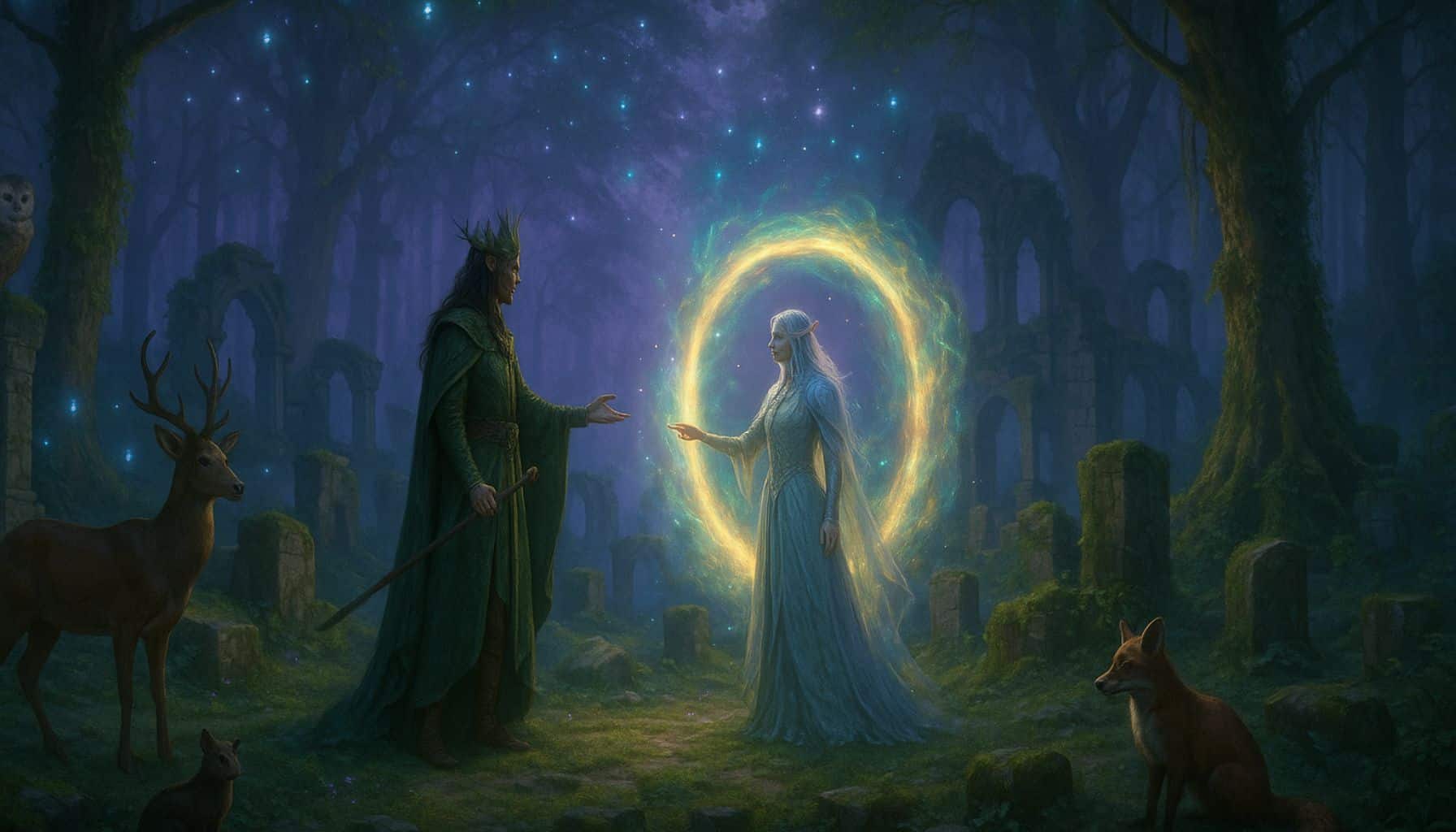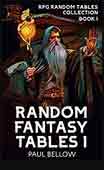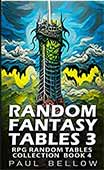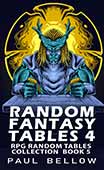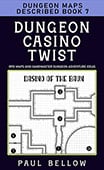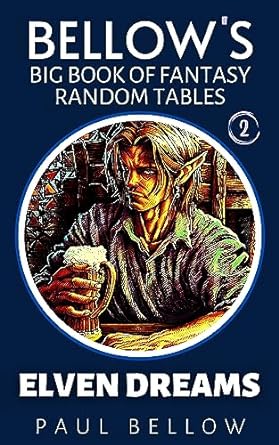Non-combat encounters occupy a powerful niche within Dungeons & Dragons 5e campaigns. While swordplay and spell-slinging have their place, too many sessions spent trading blows can numb the senses, causing even the most epic battle to lose its luster. Thoughtfully crafted non-combat encounters fill worlds with tension, mystery, and emotion, offering meaningful alternatives to violence. Here, characters can outthink, outwit, and outmaneuver, flexing every facet of their personas. Sometimes, the sharpest blade is a clever word or an unorthodox idea.
Campaigns thrive on depth when players see the world respond to their actions in ways that don’t always demand drawing weapons. Non-combat encounters invite players to interact with lore-rich environments and multidimensional NPCs, forging relationships and rivalries that echo louder than the clash of steel. Through these scenarios, characters reveal layers and nuances: a paladin’s code tested by moral dilemmas, a bard’s charm opening doors even the rogue’s lock picks cannot, or a warlock’s forbidden knowledge tilting negotiations. The true heart of storytelling emerges when players share a laugh over a botched masquerade, puzzle through ancient riddles, or unravel a villain’s web of lies instead of simply ending threats by force.
Story depth blossoms when players experience agency. When their choices matter and lead the narrative into unexpected terrain. Non-combat encounters expand on this principle, empowering players to approach obstacles from myriad angles and cultivate traits beyond brute strength or magical might. Roleplaying becomes a theater of possibility, each scene a stage for character development. Bonds form not just in battle, but in debate, wit, and discovery. Group creativity flourishes as players tackle challenges together, whether interpreting coded messages, surviving treacherous environments, or arguing the fate of kingdoms.
Ultimately, non-combat encounters breathe life into a campaign by adding variety that keeps players hungry for the next twist. They prevent fatigue, foster collaboration, and spark joy in both triumph and failure. Puzzles confound, social scenes seduce or enrage, mysteries beckon with shadowy clues, and the landscape becomes more than background. It becomes adversary, ally, and enigma. Without these moments, stories stagnate. With them, campaigns transform into unforgettable journeys defined as much by the characters’ minds and hearts as by the swords at their sides.
Types of Non-Combat Encounters and Their Uses
Non-combat encounters in D&D fall into several broad categories, each contributing its own unique dimension to the narrative landscape. Social interactions call upon wit, charisma, and emotional intelligence, allowing characters to influence events through conversation, negotiation, and bluff. Exploration-based challenges lure adventurers into uncharted territory, demanding creativity, resourcefulness, and collaborative problem solving.
Puzzles turn the focus inward, inviting players to outthink the scenario, decode hidden truths, and unlock secrets concealed by clever design. Skill checks ask the group to leverage their varied talents, employing abilities like stealth, investigation, persuasion, or survival for tangible, narrative-driven outcomes. Finally, mysteries draw the party into situations dripping with intrigue, requiring pattern recognition, deduction, and a willingness to question everything and everyone.
Try my AI Tabletop RPG generators...and an extensive library of content!
Social interactions typically unfold with the living tapestry of NPCs populating the world. These scenes can range from high-stakes diplomatic summits at royal courts to tense interrogations in smoke-filled taverns or desperate pleas for mercy before a city council. Such encounters are ripe with roleplaying potential, offering space for memorable character moments and the forging of alliances or enmities that ripple across the campaign. The best social scenes challenge players to consider their goals, adapt to changing dynamics, and weigh the costs of success or failure.
Exploration-based challenges transport the party beyond the confines of settlement and civilization. Players may need to traverse hazardous landscapes, solve spatial mysteries in ancient ruins, negotiate natural disasters, or decipher dangerous phenomena. These encounters emphasize teamwork, initiative, and lateral thinking. Rather than acting as mere obstacles, well-crafted exploration scenarios reveal secrets about the setting, enhance the sense of wonder, and reward detailed engagement with the world’s geography, culture, and history.
Puzzles disrupt the flow with moments of cerebral intensity. Logic grids woven into ancient temple floors, tangling illusions, mechanical traps, riddles, and arcane codes all demand collective ingenuity. Puzzles can shape the atmosphere—invoking dread, delight, or both. At their best, they break up the action, encourage cross-table collaboration, and provide memorable “aha!” moments when the solution clicks. Skill checks often underpin these encounters, serving as tools rather than crutches, supplementing in-character reasoning with dice-based outcomes.
Mysteries tie all these threads together, urging the party to don detective hats. Tracking missing persons, solving murders, unraveling conspiracies, and exposing hidden truths test both collective insight and individual skills. Great mysteries live on in player memory, not just for their resolution but for the anxiety and speculation they produce. Each clue snatched from the shadows, red herring, or sudden twist strengthens the group’s sense of agency and draws them deeper into the campaign’s heart. Carefully layered mysteries reward both methodical investigation and creative thinking, ensuring that every party member, regardless of class, finds their chance to shine.
⚔️ Fantasy RPG Random Tables Books
Make life as a Gamemaster easier…
If you play Dungeons & Dragons, Pathfinder, or other fantasy RPGs, this
RPG random tables series
is packed with encounters, NPCs, treasure, and more. Available in eBook or print—either way, you’ll have a wealth of adventure ideas at your fingertips.
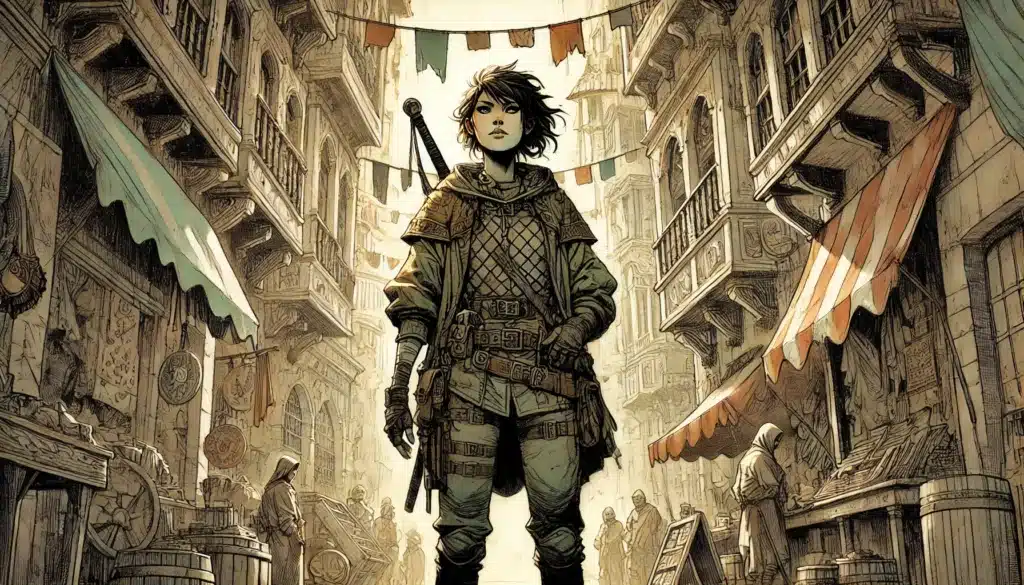
Social Encounters: Diplomacy and Roleplaying
Social encounters operate as the marrow of campaign worlds, giving voice and spirit to NPCs who might otherwise blur into the background. Every word exchanged—whether whispered promises, public declamations, or barbed quips—potentially changes the course of a story. Here, face-to-face with kings, merchants, spies, or beggars, even a stoic barbarian can break type and reveal cunning or compassion. The stakes, unmoored from hit points, often cut deeper: reputations, alliances, and destinies hang on a handful of phrases and a glint in the eye.
Negotiations, debates, and diplomatic exchanges showcase characters’ social skills and encourage strategic thinking. A silver tongue can forestall conflict or open doors to treasure, information, or sanctuary. Characters with high Charisma, insights into cultural norms, or simply a knack for reading people can shift power dynamics and steer events away from disaster. Yet social encounters offer more than mechanics. They allow players to shape their own legends. A deal brokered at the eleventh hour, a rousing speech to rally frightened townsfolk, a conniving plot to outmaneuver a rival—these are victories that linger in memory longer than most critical hits.
NPCs draw color from these scenes, evolving beyond simple quest dispensers into living forces within the campaign. Memorable relationships trace their roots to earnest conversations, tense standoffs, and the kind of spoken challenges that forge enemies as often as they win friends. Allies met one session might become bitter opponents the next—only to find common cause when events spiral out of control. Arcs and rivalries looping from one social encounter to the next provide continuity, drama, and unpredictability.
Skillful social scenes balance stakes, agency, and roleplaying freedom. Give players space to try the unorthodox—incite a revolution, unmask a traitor mid-ball, or convince a dragon to lend its wisdom instead of its teeth. Structure consequences so every choice reverberates, whether the result is triumph, compromise, or public humiliation. Presenting social challenges as meaningful crossroads, not irrelevant chatter, keeps tension high and investment deep.
Examples of Engaging Social Encounters
- Negotiating a treaty between warring city-states after years of bloodshed
- Persuading a suspicious gate guard to grant entry during a curfew
- Attending a noble’s masquerade and uncovering a dissident plot through careful conversation
- Mediating a heated argument between rival merchant guild leaders in public
- Convincing a frightened village council to prepare for an impending monster attack
- Debating theology with a high priest to secure blessing for a dangerous quest
- Unmasking a disguised assassin at a crowded banquet through subtle questions
- Bartering for rare spell components in a black-market bazaar
- Serving as intermediaries during a royal wedding to prevent disaster
- Rallying a mob of angry townsfolk to forgiveness rather than revolt
- Extracting secrets from a jaded crime boss using keen insight
- Convincing a hostile judge to spare a wrongfully accused friend
- Flirting with information brokers at a seedy tavern for key intelligence
- Interrogating a captured spy while dealing with their psychological tricks
- Settling a land dispute for a farming village by listening to all sides
- Pleading with an ancient spirit to grant a boon for the party’s quest
- Bargaining with a greedy scribe for access to forbidden tomes
In every scenario above, social encounters should feature clear outcomes and tangible stakes. Whether success means averting war, winning a desperately needed ally, or simply gaining a moment’s respite, the scene’s tension should revolve around what stands to be gained or lost. When players sense that words wield true power, that their actions can tilt history’s scales in places no sword possibly could, the drama remains taut and the sessions electric.
NPCs must respond authentically, their motives and personalities shaping every interaction. The party’s choices might provoke retaliation, inspire lasting trust, or birth new complications. When social encounters ripple forward, leaving lasting marks on the world, they become as memorable as any climactic duel, their consequences echoed in future stories and relationships.

Puzzle Encounters: Challenge the Mind
Puzzles infuse campaigns with doses of cerebral challenge, slowing the flow of action to highlight player ingenuity and teamwork. Rather than test swords or spells, they demand lateral thinking, interpretation, and cooperative puzzle-solving—all while deepening immersion in the world’s mysteries. A well-designed puzzle does more than deliver momentary frustration or pleasure; it punctuates the story, provides moments of shared triumph, and can even become a campaign’s most talked-about memory.
Variety anchors excellent puzzle encounters. Mechanical contraptions guard doors in ancient tombs, arcane glyphs shimmer on library shelves, riddles echo from enchanted statues, and logic challenges haunt ruined laboratories. Each puzzle requires different skills and different ideas, making it easy for every player to contribute. A barbarian can force gears into alignment, a wizard can recall lore, a cleric can pray for divine hints, while the rogue keeps an eye out for hidden traps. Puzzles reward group dialogue and creative experimentation, not just rote dice rolling.
The pacing benefits from puzzles: after a tense battle or harrowing social scene, cognitive riddles offer a different sort of engagement. The sudden hush as players huddle to pore over clues contrasts sharply with the din of combat, keeping the session fresh. When solved, puzzles deliver distinct satisfaction: an “aha!” moment that belongs equally to every participant, no matter their class.
Well-crafted puzzles integrate seamlessly with their context. They can act as gatekeepers for vital information, escalate tension with time limits or danger, or simply delight with clever wordplay. Above all, they should never serve as roadblocks. Alternative solutions—like brute-forcing a mechanism, seeking outside help, or even bypassing entirely—should be considered fair play, so long as the effort feels organic to the narrative and earns commensurate rewards.
| Puzzle Type | Example | Ideal Scenario or Location |
|---|---|---|
| Logic | Arranging levers in correct sequence to open a vault | Dwarven bank treasury |
| Riddle | Solving a talking sphinx’s poetic question | Ancient burial chamber |
| Mechanical | Disarming spiked floor tiles with clockwork gears | Thief’s underground hideout |
| Language/Cipher | Decoding a scroll in runes to find a password | Wizard’s tower |
| Visual | Aligning colored lenses to reveal a hidden message | Overgrown elven temple |
| Sound/Music | Replicating a melody on chimes to unlock a door | Haunted concert hall |
| Environmental | Creating shadows in certain shapes using torches | Forgotten shrine in cavern |
| Mazes | Navigating a shifting floor labyrinth | Mad architect’s mansion |
| Pattern Recognition | Noticing repeating sigils in mosaic tiles | Royal palace antechamber |
| Magical | Deactivating an arcane ward with ritual gestures | Sorcerer’s inner sanctum |
| Memory | Recalling vital clues from previous sessions | Time-lost city ruins |
| Physical Dexterity | Passing a series of moving platforms | Goblin king’s puzzle-gauntlet |
Puzzles should balance challenge and fairness, always remaining sensitive to the party’s skills and context. Offer clear clues or layers of hints, set stakes that feel exciting but not punitive, and reward both the process and the solution. Sometimes, the greatest puzzle-solving moments come not from the “correct” answer, but from an ingenious approach the DM never anticipated—be ready to recognize and celebrate those as well.
⚔️ Fantasy RPG Random Tables Books
Make life as a Gamemaster easier…
If you play Dungeons & Dragons, Pathfinder, or other fantasy RPGs, this
RPG random tables series
is packed with encounters, NPCs, treasure, and more. Available in eBook or print—either way, you’ll have a wealth of adventure ideas at your fingertips.
Dungeons aren’t the only places for puzzles. A city could hide its biggest secret in a mural, a castle’s defenses might rely on coded colors in banners, or a forest-dwelling druid could pose a seasonal riddle before granting aid. The key is plausibility and fun. Puzzles should enhance narrative, not derail it, and allow all players access points that reward their unique skills and perspectives.
Exploration and Environmental Challenges: Interaction Beyond NPCs
Nature and the environment present obstacles indifferent to ego or ambition. Often, the world itself proves to be the mightiest adversary, demanding resilience, cunning, and teamwork. Exploration and environmental challenges propel characters into situations where survival depends on quick thinking and the creative use of resources. Here, spellbooks and weapons can matter less than rope, a map, and a sharp memory.
Navigating environmental hazards rewards teamwork and observation. Players might need to decipher ancient cartography, traverse hazardous ruins, or coordinate efforts to cross treacherous terrain. These scenarios shine when the landscape’s dangers feel unpredictable and dynamic: flooding tunnels, shifting sand dunes, volcanic eruptions, or magical anomalies upend even the most careful plans. Character skills like Perception, Survival, Athletics, and Nature become crucial, encouraging players to lean into their specialties and try new approaches.
Physical obstacles and exploration-based puzzles also deepen immersion. The party might seek a way across a river swollen with storm runoff, brave a vertical ascent up a crumbling cliff, or chart a path through a forest where time and direction bend. Characters who track, forage, and adapt form strong party bonds, their stories marked by the scars, laughter, and discoveries earned on the road.
Environmental encounters break up sessions dominated by town life or dungeon crawls. They act as narrative bridges, shifting pace and focus, offering new ways to build tension or deliver lore. Danger isn’t always a sword-wielding opponent; sometimes, it’s the wind howling through a cursed pass or the reality-warping effects of fey magic that turn simple travel into adventure.
Ideas for Exploration and Environmental Encounters
- Crossing an ancient, crumbling bridge as stones fall away with each step
- Navigating a magical hedge maze where paths shift behind the players
- Climbing a jagged mountain during a sudden blizzard
- Escaping from quicksand while under pressure to act quickly
- Solving illusions in an enchanted forest that obscure the true path forward
- Traversing a sunken ruin, managing dwindling air and latent traps
- Building a raft to survive dangerous currents after a river crossing fails
- Managing travel through a desert where mirages and exhaustion threaten survival
- Finding shelter during a lightning storm atop a haunted plateau
- Mapping a mine whose tunnels realign with each passing hour
- Scaling a waterfall to reach a hidden cave entrance with no clear handholds
- Evading magical pitfalls that teleport or confuse in an ancient dwarven tunnel
- Outrunning a spreading wildfire across dry summer grasslands
Describing the environment’s threats in sensory detail helps ground the scene. The shriek of wind, sting of sleet against skin, tang of ozone as lightning strikes nearby, or shifting ground beneath boots—all serve to anchor challenges as real and present dangers. Let player solutions be as varied as their imaginations; sometimes the best answer is improvisation, or leveraging forgotten gear in unexpected ways.
Dynamic environments allow creativity and risk-taking. If a bridge looks unstable, maybe the party opts to construct a rope pulley or test weight with a summoned creature. The best encounters invite quick thinking, lateral reasoning, and roleplay: the druid transforming into a bird to scout, the paladin using shield as a sled on an icy slope, or the wizard conjuring illusions to distract a denizen. Whenever possible, reward ingenuity over rote dice rolls and let characters shine in scenes where nature, magic, and ingenuity collide.
Try my AI Tabletop RPG generators...and an extensive library of content!
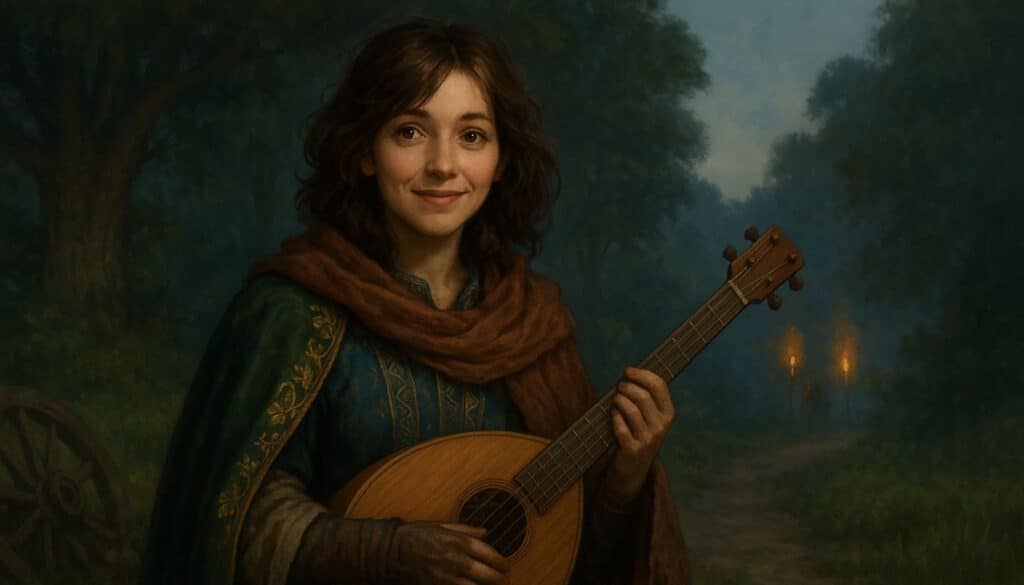
Investigative and Mystery Encounters: Uncovering Secrets
A world without secrets quickly dulls. Investigative encounters weave intrigue through campaigns, compelling characters to peer beneath the surface and unravel webs of lies, buried histories, and enigmatic threats. These encounters shift the focus from violence to deduction, pattern recognition, and piecing together clues strewn across scenes and sessions.
Mystery-centric play creates layers of engagement. Players draw connections from disparate evidence, test theories, and pursue leads through interviews, research, and careful observation. DMs can employ red herrings, overlapping motives, and escalating consequences to draw even the most taciturn character into the fray. The pace might slow, but the tension thickens as players edge closer to truth—or upend their own assumptions.
Investigative scenes offer a spotlight to characters with sharp minds or niche abilities: the bard schmoozes suspects at a soiree, the wizard analyzes residue left by arcane crimes, the ranger tracks footprints beneath a window. Yet successful mysteries are more than ability checks; they require cooperation and active engagement. When clues are distributed widely, each character can contribute unique insights, becoming vital to the party’s collective success.
Solving a mystery can mean tying off a campaign-defining arc, exposing a villain, or simply restoring peace to a troubled town. The journey matters as much as the destination: every deduction, each epiphany, further entangles players in the world. Succeeding against a cunning foe or unmasking a traitor brings immense satisfaction, blending immersion, storytelling, and personal triumph.
Ideas for Investigative and Mystery Encounters
- Solving a murder mystery at a noble’s estate during a stormy night
- Tracking the theft of a magical artifact through winding city alleys
- Uncovering a conspiracy in a royal court by interpreting subtle political moves
- Decoding coded correspondences exchanged by a thieves’ guild
- Investigating a haunted manor to reveal the origin of its restless spirits
- Disproving false accusations against a fellow party member
- Researching obscure lore to find the cure for a magical disease
- Piecing together clues left at the scenes of serial disappearances
- Exposing a cult by linking ritual patterns with missing persons reports
- Interviewing witnesses to identify a shapeshifter infiltrating the city
- Proving a merchant’s goods are counterfeit through careful deduction
- Interpreting ancient murals describing a forgotten civilization’s secret
- Finding the saboteur responsible for a mine collapse
- Reconstructing events at a battle-scarred ruin to reveal hidden motives
- Catching a double agent in the resistance using evidence and intuition
Mysteries flourish when clues are layered and logical; players should always have several directions to pursue. Foreshadow twists and connections, reward careful note-taking, and involve the senses—unusual smells, odd sounds, cryptic notes, or visual inconsistencies all set the stage. To prevent frustration, always have contingency hints ready and remind players that creative approaches can open new investigative avenues.
Contingency planning is key, as no mystery survives first contact with a clever party. If the group leaps ahead in the solution or charts a side path, be ready to move the narrative accordingly. When mysteries reward active engagement, critical thinking, and creative teamwork, they transcend their role as mere obstacles, becoming the glue that binds campaign arcs and player satisfaction alike.
Designing Engaging Non-Combat Encounters
Crafting non-combat encounters that resonate requires intention, context, and flexibility. Encounters should arise naturally from the campaign narrative, with clear stakes and purposes that keep players invested. DMs benefit from varying challenge types—puzzles, social scenes, environmental obstacles, and mysteries—to maintain engagement and allow each party member to utilize their unique set of skills and backgrounds. Well-rounded design ensures that no two encounters feel the same, each delivering something fresh and meaningful.
Objectives must always be clear. Players need to understand what constitutes success or failure, the potential risks and rewards, and how their agency can steer events. Open-ended approaches should be encouraged: allow multiple solutions, reward creative thinking, and adapt outcomes based on player ingenuity. When stakes are ambiguous, tension falters—ground scenarios in the world’s logic so outcomes echo forward, shaping character arcs and future encounters.
Pacing is vital to successful non-combat design. Lengthy, meandering social scenes or multi-stage puzzles risk leaving some players disengaged, while a relentless barrage of skill checks can feel repetitive. Rhythm your sessions, interspersing high-tension challenges with opportunities for discovery, rest, or reflection. Weave non-combat moments into the campaign’s pulse, ensuring that every encounter advances the story and nurtures character growth.

Incorporating Player Backgrounds and Motivations
Sessions gain deeper resonance when encounters intersect with the characters’ histories, fears, ambitions, and personal quests. By weaving individual backstories into non-combat challenges, DMs empower players to explore vulnerabilities, confront old wounds, and claim the narrative spotlight. Personalization fosters a sense that the world is alive and responsive—that choices, no matter how small, have meaning and consequence.
Scenarios rooted in player backstories anchor character investment. When a paladin stumbles onto the ruined chapel where she once swore her oaths, or a warlock’s patron sends an emissary to “check in” mid-adventure, the moment’s gravity becomes undeniable. Characters deepen through these moments: unresolved grudges ignite new conflicts, lost loved ones beckon from the past, and forgotten lessons manifest as unexpected challenges or support. These scenes offer roleplaying gold, rewarding players for fleshing out their origins and motivations.
Personalized non-combat encounters often blur the line between spotlight moments and group challenges. One player might confront a cruel rival who knows their secrets while the rest of the party plays supporting roles—negotiators, peacekeepers, or even saboteurs. Inheritance disputes, family reunions, or old debts reborn bring the whole table together, their outcomes rippling through future choices and shaping group dynamics.
Integrating backstory requires forethought and subtlety. Drop hints, introduce recurring NPCs, and weave connections across arcs so personal moments feel earned, not contrived. Allow players to shape these encounters—let them surprise you with their responses, and reward their risks with tangible consequences or opportunity for meaningful character development.
Examples of Personalized Non-Combat Encounters
- Reuniting a character with a long-lost sibling who arrives with urgent news
- Having an old rival resurface to challenge a character’s reputation in front of powerful NPCs
- Resolving a family inheritance dispute where the party must arbitrate claims
- Finding a mentor who holds vital information for the main quest
- Defending a character’s hometown from shady politicians or guilds
- Encountering a lost lover whose allegiance has dramatically shifted
- Facing a tribunal for past crimes or mistakes committed before adventuring
- Receiving a message or vision from a character’s deity or patron, demanding intervention
- Uncovering a secret society that once initiated (or betrayed) a party member
- Attending a festival celebrating a long-dead ancestor, with rituals only the character understands
- Assisting a family member unjustly accused of wrongdoing
- Bargaining for a family heirloom stolen years ago
- Meeting a childhood friend who reveals new information about the character’s origin
- Negotiating with a rival adventuring group whose leader has history with a party member
Personalization isn’t just fan service—it’s campaign enrichment. Players treasure opportunities to resolve unfinished business, reclaim lost honor, or make peace with regret. These scenes often become the most memorable, sparking emotional investment and group cohesion that lingers long after the dice stop rolling.
The true alchemy of a campaign emerges when every party member recognizes that the adventure is uniquely their own. Tailored non-combat encounters, grounded in backstory and character motivation, transform scenes from routine obstacles into pivotal, character-defining moments. Over time, these personal challenges become the plot’s keystones, etched in memory as the moments that made each hero truly unforgettable.
Avoiding Common Pitfalls in Non-Combat Encounters
DMs aiming for compelling non-combat play can encounter several stumbling blocks that derail immersion or engagement. Puzzles that baffle rather than engage, social scenes that meander without consequence, paths that bottleneck into a single required skill, or mysteries with just one “correct” answer can grind sessions to a halt. It’s all too easy to design an encounter that looks perfect on paper but falls flat under the weight of expectation, distraction, or miscommunication.
⚔️ Fantasy RPG Random Tables Books
Make life as a Gamemaster easier…
If you play Dungeons & Dragons, Pathfinder, or other fantasy RPGs, this
RPG random tables series
is packed with encounters, NPCs, treasure, and more. Available in eBook or print—either way, you’ll have a wealth of adventure ideas at your fingertips.
Encounters lose their magic when objectives are unclear or consequences toothless. Players disengage if they sense their efforts don’t matter—when NPCs remain passive, conversations circle with no action, or mysteries seem unsolvable. Social scenes, in particular, can become background noise unless they are charged with high stakes and dynamic personalities. Skill checks risk becoming mere dice-rolling exercises unless their results are embedded in the world’s logic and story.
Another pitfall is rigidity. When there’s only one permissible solution—whether to a puzzle, an investigation, or a diplomatic challenge—creativity suffocates. Sessions turn tense as players search in vain for the “right” button to press while other, imaginative approaches are ignored. Difficulty spikes can trigger frustration, especially if no clues or fallbacks are available for stuck parties.
The key is ongoing feedback. After an encounter, ask players what worked and what didn’t. Listen for confusion, boredom, or moments of excitement. Be ready to make mid-session adjustments—clarify stakes and goals, introduce new clues, or allow unorthodox but authentic solutions. A flexible DM who prioritizes player agency and narrative continuity will always recover more gracefully than one fixated on sticking to the script.
| Pitfall | How to Avoid | Mid-Game Correction |
|---|---|---|
| Puzzles too obscure | Layer hints, break into stages | Offer NPC hints or flashbacks |
| Passive/unresponsive NPCs | Give clear motives and active goals | Have NPCs take initiative or act |
| Unclear goals/objectives | State stakes and possible outcomes | Reiterate goals clearly in scene |
| Over-reliance on a single skill | Allow multiple approaches | Let alternative abilities apply |
| One-solution roadblocks | Reward creative answers | Accept lateral solutions mid-play |
| Endless social scenes | Set time limits and tangible stakes | Summarize/skip to key outcomes |
| Insufficient consequences | Tie results to world/NPC reactions | Add immediate feedback or ripples |
| Static environments | Add dynamic elements (weather, surprises) | Introduce new dangers or variables |
| Ignoring player backgrounds | Integrate personal stakes/rivalries | Link NPCs/goals to party history |
| Pacing too slow | Use quick summaries, create urgency | Move to next scene, summarize info |
Flexibility and adaptability safeguard player engagement. When a solution surprises you, reward it. If the story stalls, inject new stakes, resources, or dangers. Be transparent about stakes and objectives, and embrace the chaos of creative players steering encounters in unexpected ways.
Above all, stay attuned to player feedback. Note what excites and what bores, and use those lessons to refine your next session. Non-combat encounters work best when they reflect the tastes, strengths, and aspirations of the group, not just the DM’s preferences.

Making Non-Combat Encounters Rewarding
Rewards matter. While non-combat accomplishments might not fill treasure chests, their impact can drive entire campaigns. DMs should tailor rewards to fit the scenario, from narrative payoffs and new information to character growth, powerful allies, or unique items. Every achievement should feel significant and rooted in both world and story, affirming players’ investment and commitment to their roles.
Consider the range of possible boons. Social triumphs might lead to improved reputation with powerful NPCs or access to restricted locations. Solving difficult puzzles or mysteries could reveal ancient secrets, open new story arcs, or grant magical knowledge unattainable by force. Exploration scenes might result in useful survival gear, secret paths that cut weeks from a journey, or alliances with local peoples. Above all, ensure that each reward acknowledges the skill or creativity that solved the challenge.
The best non-combat rewards shape the campaign’s future, not just its present. They deepen character arcs, forge lasting relationships, and offer resources or contacts that come into play in unexpected ways. Non-combat rewards are not always tangible: a whispered secret might save the party from disaster months later, while an alliance born of clever diplomacy could change the tide of a war.
Non-Combat Rewards and Their Impact
Rewards for non-combat encounters come in many flavors, each serving to reinforce story momentum, deepen relationships, and provide new toys for players eager for more than coin and steel. Information stands as the most potent—whispers of ancient magic, rumors about a villain’s next move, lost histories, or the truth behind looming dangers. These revelations often unlock new quests, shift objectives, or empower the group in ways no spell ever could.
Recognition, influence, and social standing move mountains in campaigns centered on intrigue, politics, or urban adventure. A carefully wrought alliance with a noble house, the respect of a secretive thieves’ guild, or new authority among local townsfolk can turn former obstacles into valued resources. Sometimes, successful negotiation opens doors to specialized shops, invites to exclusive events, or offers of rare training.
Material rewards tailored to the encounter or character can surpass gold’s allure. A family heirloom reclaimed, a spellbook containing forbidden magic, a badge of honor from a grateful city—these gifts root the character more firmly in the story. Narratively significant items, like a ring of keys granting passage to restricted areas or a single-use boon from a powerful NPC, weave new threads for both ongoing and future adventures.
Personal growth forms perhaps the richest reward. Characters may resolve deep-seated trauma, gain clarity about their beliefs, or earn renown for their heroism or courage. Unlocking hidden abilities, deepening skill proficiency, or forming mentor-student relationships can turn a non-combat triumph into a watershed moment. These victories often resonate more profoundly than any battle.
Examples of Non-Combat Rewards
- Secret information about a villain’s true plans or hidden lair
- Access to restricted city sectors or forbidden libraries
- Improved social standing with influential NPCs or factions
- Acquisition of a magical item tailored to a character’s backstory
- Gaining a loyal political ally or sponsor
- Receiving mentorship or advanced training from a legendary figure
- Permanent discount at a merchant’s shop as thanks for support
- Gaining property or safe haven (house, warehouse, enchanted room)
- An ancient artifact that enhances non-combat abilities
- Unlocking a secret passage or shortcut on a dangerous journey
- Official recognition (titles, medals, honorary positions)
- Membership in a secret society or guild with unique privileges
- Earning the trust of a town, granting access to community resources
- Discovering a lost language or piece of history relevant to the plot
- Reconciliation with a family member or rival, leading to ongoing aid
- A magical boon (one-time spell, blessing, or vision)
- Gaining leverage over a major villain through blackmail material
Rewards chosen with purpose deepen investment, encouraging players to pursue creative solutions rather than defaulting to violence. When the prize fits the effort and resonates with the story, player satisfaction balloons. Allies, secrets, and character-specific items add longevity to campaign arcs, ensuring these moments ripple outward and shape the adventure’s future.
Try my AI Tabletop RPG generators...and an extensive library of content!
A well-crafted reward system for non-combat scenes turns every successful negotiation, clever deduction, or emotional breakthrough into a campaign highlight. Players learn to celebrate not just what they win, but how they win—and the echoes of these moments linger, long after the dice are put away.

Final Thoughts on Non-Combat Encounters
Non-combat encounters enrich Dungeons & Dragons campaigns by multiplying the ways characters can engage with the world and with each other. They confer narrative depth, foster character growth, and invite players to flex new skills, discover hidden strengths, and rewrite destinies. Social intrigue, exploration, puzzles, and mysteries all add vital breath to the game’s lifeblood, ensuring that adventure means far more than who swings hardest.
For Dungeon Masters, non-combat scenes provide tools to shape the campaign’s flow and emotional landscape. With each conversation that shifts an NPC’s heart, each puzzle cracked open by a clever team, and every secret unearthed through patient investigation, campaigns gain substance and soul. Memorable sessions are born not just from combat, but from all the moments between—the narrow escapes, intense debates, shared discoveries, and brazen bluffs.
Challenge yourself to experiment. Lean into the full spectrum of what the game can offer, trying new encounter types, unusual rewards, and story arcs that dovetail with character ambitions. If something doesn’t quite work, solicit feedback, tweak your approach, and keep pushing the boundaries. There are no wrong answers—only unexpected solutions and untapped potential waiting behind every roll.
Meaningful engagement, clear stakes, and genuine player agency are the cornerstones of every great non-combat encounter. When you consistently deliver on these principles, your campaign will pulse with life, suspense, and the kind of memories that keep friends talking about the adventure long after the final session fades into legend.

